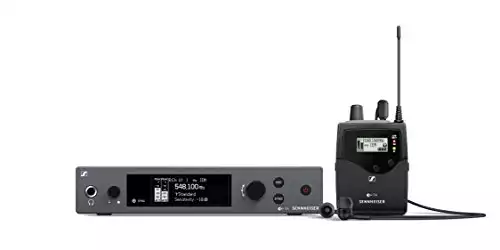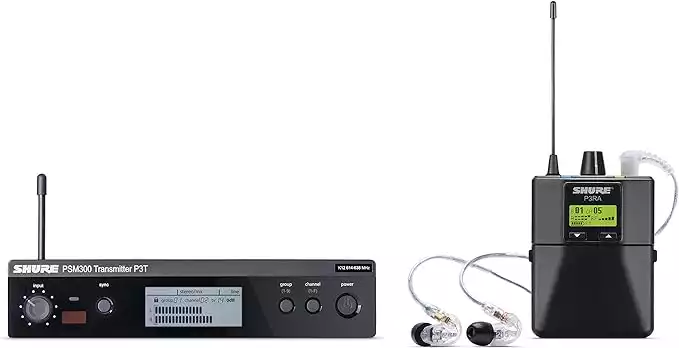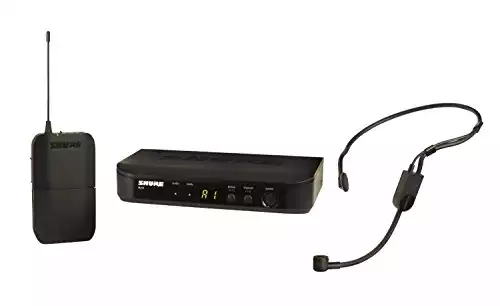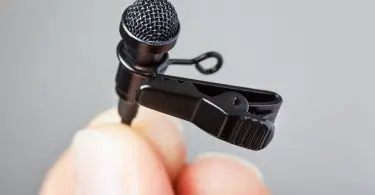Back in the day, musicians had a big box on the floor with speakers that projected only the performer in front of it. That design had some limitations. You had to be right in front of your own monitor to hear yourself, limiting your movement on stage. And of course, everyone is all too familiar with the horrid screeching of feedback if you moved too close to the monitor with your mic. But today, a wireless in-ear monitor (IEM) system is practically invisible.
However, with so many choices, how do you choose the right product for your needs? Fear no more because this list has the latest reviews, so all you do is decide between the best of the best. Hands down, the top in-ear monitor is the Sennheiser EW 300 IEM G3 In-Ear Wireless Monitor System. It is of the highest quality, providing crystal clear sound. This system allows for stereo mixing and everything you need for performing in a moderately sized venue.
So, keep reading to learn more about IEMs and the top systems available today.
-
 $1,039.00Check on Amazon Search Used
$1,039.00Check on Amazon Search UsedThe Sennheiser EW 300 IEM G4 has a small earpiece you can customize for comfort, a powerful receiver, and awesome stereo mixing capabilities. Additional components, like the remote monitoring software means this product meets today’s technologically advanced stage sound expectations.
03/07/2024 09:14 pm GMT -
-
-
 $1,139.00Check on Amazon Search Used
$1,139.00Check on Amazon Search UsedThe sound quality and range are up there with higher-end systems. This system includes everything you need for four band members
03/10/2024 09:11 am GMT
From church praise bands to garage bands with bar gigs to recording artists, there are a lot of opinions – suggestions, products, price points and features. Together, this list contains valuable information to help you shop for an IEM system.
I am a lead vocalist in a church worship band. I also have previous experience as a backup vocalist for a country music recording artist and worked as a booking agent for a Christian worship band. In fact, my son is studying worship leadership and learning everything about recording and performing, so I sought his opinion as well as those of his university instructors.
Also, I have many friends in the local music scene, from classic rock to scream. So I also included their input to understand the wide variety of IEM needs in different genres. As a vocalist, I was around since before IEMs, when I thought I had perfect pitch. However, IEMs reveal everything.
As a performer, I understand the sore throat problems resulting from trying to sing over the instruments. And I can attest to the fact that IEMs can change a vocalist’s life.
How to Determine Which IEM System You Need
Before you start shopping for a wireless in-ear monitor system, jot down some notes about your use and needs. Then, ask yourself these questions:
- How many musicians will use the system?
- What is the size of the venue for the performance?
- Do you need a mono or stereo system?
- Do you have a sound person who can run a complex system?
- Or do you need a simple plug-and-play system anyone can hook up?
- Do you need a system with Ethernet or USB ports for hooking into computer-generated sounds?
- Are you a mover or a stationary musician?
- Do you want only to hear yourself or hear the whole band?
The more movement required of you onstage, the more freedom you need. You want a wireless in-ear monitor system with higher frequencies and more bandwidth that can handle your constant movement. This won’t be your top concern if you are stationary, such as a drummer or pianist.
If you only need to hear yourself, choose a mono-receiver system. This means one channel is dedicated to you and only you hear your own voice in your ear. You need a system with a stereo receiver if you need to hear the whole band or just the drummer, etc.. This allows you to mix channels for a personalized sound in your ear.
How Much You Should Expect to Spend on Your IEM System
In-ear monitor systems are expensive. Although you can find systems under $300, the quality and craftsmanship won’t be worth the savings. By the time you determine your budget system won’t meet your needs and decide to buy a mid-grade system, you’ve already spent what it would cost to purchase a high-end product in the first place.
So, be sure to read these reviews, consider your needs, and then purchase the best wireless in-ear monitor system you can find. Be prepared to shell out the most cash you can part with, so you don’t have to make your IEM purchase twice. A great system is expandable, so you can purchase additional in-ears and bodypacks down the line should you add new members to your band or group.
Why You Should Use a Wireless In-Ear Monitor System
You should use an IEM system to stop the volume wars. When you sing to the bass, but the keys play to the drums, and the background vocalist sings to the guitar, everyone competes to hear themselves and their counterparts. Enter in-ear monitors. Suddenly you have peace in volume. You hear what you need to hear perfectly, every time. And when you get rid of the volume wars, your audience gets a better show.
Wireless in-ear monitor systems are perfect for studio recording and stage performance. When you mix different aspects of the music into your ear, you will get the best recordings. You can adjust pitch and tone issues without waiting for the playback. Musicians can follow timing and cues more easily both in the studio and during a performance.
IEMs Vs. Floor Monitors
Perhaps you’ve used floor monitors forever, and your young, new bass player is pushing for in-ear monitors. So, what’s the big deal? They are expensive and the floor monitors you’ve always used have always been fine. However, your new guy has probably been using IEMs since he started playing, so not having the same quality of sound may be difficult for him.
The benefits of IEMs justify the cost. You will have full freedom of movement on stage, clear sound in your ear, no feedback issues, and the ability to feed whichever members of your band you want into your ear. This is a great time to upgrade your sound system. A few advantages of going wireless include:
- A cleaner stage look with the absence of bulky floor monitors.
- Fewer trip hazards from cords on stage.
- Quicker load-in times.
- Less wattage usage for equipment plug-in because IEMs are battery operated.
- Wireless in-ear monitor systems are also quite easy to sound check and pinpoint.
There is no comparison between IEMs and floor monitors. First, those big wedges take up valuable stage space and create a separation between you and your audience. Secondly, you will eliminate multiple power cords, which are both a trip hazard and a power sucker. Finally, you can move around on stage without worrying about staying in range of your wireless in-ear monitor. A decent IEM system enables you to focus on your performance.
The Best Way to Use IEMs
It is best for every member of your band to use the IEM system together. Each person can tune to hear only themselves or mix other musicians in. The larger your group and the more vocalists you have, the more necessary it is to have in-ear monitors. Your vocalists can all be fed vocals only. Your guitarist can hear the bass. The keys get the drums, and so on.
How IEMs Work
To use a wireless in-ear monitor system, all you have to do is insert the tiny monitor in your outer ear, much like an earbud headphone. Its antenna is either self-contained or in a battery pack you wear on your hip or back. The earpiece is lightweight and can be as large as an office headset or as small as a tiny hearing aid, depending on which brand and style you choose. This equipment is battery operated.
The Technical Side of IEMs
If you have a sound guy, you shouldn’t have to worry about the setup and mixing. It is not much different than using any other types of monitors. If you are using it yourself and lack a background in sound tech, you will probably need to watch a few videos. You could also get a tutorial from someone who is familiar with wireless technology.
Also, if you are only used to having mono receivers, the concept of stereo mixing may be a little tricky to learn. Once you understand the basics of how the wireless in-ear monitor system works, you’ll just have to play with it until you get everyone’s sound and volume levels just right.
The Downsides to Using Wireless In-Ear Monitor Systems
One downside of most in-ear monitor systems is that you will need to maintain a large stock of batteries at all times. Most systems have battery indicators, so you will know before it dies on you. But, you’ll need to have batteries ready and be prepared to change them out.
Some people aren’t used to wearing something in their ear. Others who wear a hearing aid usually cannot use wireless in-ear monitor systems.
This system is expensive, especially if you are replacing equipment you’ve been using for a while.
Before you buy an IEM system, follow these simple steps:
- Make a list of each person who needs a monitor.
- Make a list of places where you perform as well as the venue sizes.
- Create a document listing your current sound equipment and specs.
- Determine how much you can spend on an IEM system.
- Shop around for the best prices and deals on bonus products or bundles.
Our Top Recommendation:
Sennheiser IEM G4
The Sennheiser EW IEM G4 In-Ear Wireless Monitor System is the best pick because you can’t beat the sound quality in this price range. You’ll get professional sound quality and improve your stage performance and audience enjoyment with this system. It is easy to use, comfortable to wear and provides excellent advanced mixing with crystal clear sound.
The Sennheiser EW 300 IEM G4 has a small earpiece you can customize for comfort, a powerful receiver, and awesome stereo mixing capabilities. Additional components, like the remote monitoring software means this product meets today’s technologically advanced stage sound expectations.
The Sennheiser EW IEM G4 helps you hear yourself and your musicians better while performing and recording. This means less recording time spent in playback and adjustment because you’ll hear it the first time. Studio time is money, so spend it laying down new tracks instead of repeating because your lead vocal is sharp.
The most valuable feature of this high-end, semi-pro model is an adaptive diversity receiver. You wear the small, battery-operated receiver pack on your back or belt. It works with the headphone cable as a secondary antenna, so you always have crystal clear reception.
A good fit can block outside sounds and allow you to listen at lower volumes. The small earpiece comes with adjustable pads for a customized fit, reproducing the signal from the adaptive diversity receiver for perfect sound every time. Just choose the pads that provide the best fit and seat the earpiece tightly in your outer ear canal.
You can also split the input signal split to other devices with the integrated pass-through outputs. The five-band equalizer also integrates into the transmitter for the most precise audio personalization. Sennheiser offers wireless in-ear monitor system manager software to remotely monitor via the built-in Ethernet port on the stereo transmitter. Basically, your sound guy can walk around the venue and make changes to the mix from different vantage points instead of running back and forth to the soundboard.
Sennheiser EW IEM G4: A Top-of-the-Line System in the Semi-Pro Range
The pricing varies depending on where you purchase this system. Be sure to look for available rebates, optional equipment or any bundles available at the time.
Professional equipment starts at over $5,000. But this is a top-of-the-line wireless in-ear monitor system in the semi-pro range, so it has a top-of-the-line price. However, you get well over $1,000 worth of value out of this system. The enhanced performance means excited audiences and more gigs.
This system also wins on ease of use. Just plug it in and turn it on. The G4 is rugged and delivers high-quality sound, with a large range, so you don’t need your soundboard near the stage. This wireless in-ear monitor system works well in all but the largest venues, like arenas.
The Sennheiser system is great for frequent use and the batteries last a long time. The indicator lights on the bodypack let you know when they are getting low. There is virtually no feedback or signal noise. Interference is typically one of the biggest complaints in budget IEMs. But, no one has complained about interference with the Sennheiser system.
Sennheiser has put much effort into giving musicians exactly what they need. This system has a small earpiece customizable for comfort, a powerful receiver, and awesome stereo mixing capabilities. Additional components such as the remote monitoring software bring this product into today’s technologically advanced stage sound expectations.
This wireless in-ear monitor system addresses everything perfectly. The only negatives were that some people felt the earpiece itself was cheap-looking and the setup instructions were not super clear. It is helpful to watch a few tutorials on the product so you know how to set it up.
Runner Up:
The Shure PSM Series 300 Wireless IEM System

Credit: Shure Incorporated
The Shure PSM 300 Series Wireless In-ear Monitoring System is a close second to the Sennheiser system for two reasons: price and simplicity. Although this high-quality brand still sits at the top of the price list, it shaves a couple hundred bucks off the top pick. While the savings are great, the simplicity of this system puts it in second place above all the rest.
Unique one-touch frequency finder
This Shure brand IEM features a unique one-touch frequency finder. All you have to do is touch a button and the unit finds the best frequency for you. No worries if there is a better channel or if you are crossing channels. The system finds the best one and locks it in. It couldn’t be easier.
The controls are easy to figure out, so they are perfect for musicians who are not familiar with this technology, but who are ready to make the switch. Also, the sound quality is amazing, and the bodypack is small and comfortable to wear. This system has optional rechargeable batteries, which can be a real wallet saver because you’ll probably go through a battery change every gig. Charging a few extra batteries and having them ready to switch out can greatly help your sound guy.
No Sound Tech, No Problem
Because of the user-friendly format, this would be a good system for a band lacking a sound tech but still want to improve the quality of the show and rehearsals. The setup directions are easy to follow and not too technically difficult.
The price, while still an investment, was at time of publishing a bit lower than the top IEM.
The reviewers loved how easy this system was to set up and start using. An entire jam session wasn’t wasted on getting started. You could start using this system without a technology background. Also, a few users have mentioned the ability to hook it up to a tablet to control sound from the stage.
Most of the feedback was completely positive, but every product has its issues. The only somewhat negative things were about the earpieces and the range. Many users suggested pairing this system with higher-quality earpieces. They also recommend keeping the set they include as a backup. It is also helpful to keep the soundboard close to the stage because you lose some quality at a distance.
Other In-Ear Monitors to Consider:
Shure BLX

Credit: Shure Europe
The predecessor to the runner-up pick from Shure is a great wireless in-ear monitor system that will get you going on the wireless path. The earbuds are noise canceling and deliver clear sound from a closer range. The system requires 2 AA batteries without a rechargeable option. Shure designed this as a starter system, so the Shure BLX hybrid has two input/output jacks and can grow with you as your needs change.
Earbuds are noise canceling and deliver clear sound.
The earbuds have a sound-directing nozzle design to get the sound right into your ear canal without any loss. So, they allow you to use the system at a lower volume. The best feature of this system is the excellent design of the earpieces. The equipment is beginner-level and not too complex, too.
Galaxy Any Spot AS-100-4 Band Pack System D-Band

Credit: Galaxy Audio
Galaxy takes on the big stage with their entry level whole-band wireless in-ear monitor system. You can start out with four bodypacks and add more as needed. 120 channels ensure you find a frequency without any interference. This system includes everything you need for four band members, including earbuds, body packs, and a transmitter.
The sound quality and range are up there with higher-end systems. This system includes everything you need for four band members
All bodypacks run on the same channel, so you will need additional transmitters if you want to individualize the mix for different members. Overall, this solid system has a great range that is dependable in large and outdoor venues. Also, it comes at a fair price with everything you need for the whole band.
Wrapping It Up
Whichever wireless in-ear monitor system you choose, stretch those dollars to include as many features as possible. Earbud comfort is important, but you can always upgrade earpieces. The most important thing to think about is the transmitter. Find out how many frequencies, channels and inputs/outputs it offers first. Although saving money is nice, you could sacrifice range if you frequently play in large or outdoor venues.
Also, don’t buy more system than you need. If you lead worship in a 500-seat sanctuary with a drummer and guitar player, save your money and purchase a model with fewer bells and whistles. No matter what, get ready for an incredible sound experience. There is just nothing like wireless in-ear monitoring.
Here’s the recap of the top wireless in-ear monitors:
The Sennheiser EW 300 IEM G4 has a small earpiece you can customize for comfort, a powerful receiver, and awesome stereo mixing capabilities. Additional components, like the remote monitoring software means this product meets today’s technologically advanced stage sound expectations.
Unique one-touch frequency finder
Earbuds are noise canceling and deliver clear sound.
The sound quality and range are up there with higher-end systems. This system includes everything you need for four band members










Start the discussion at talk.hearthemusicplay.com